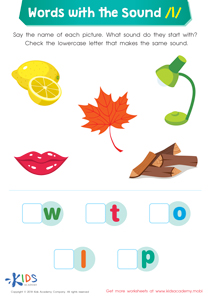Uppercase Letters Worksheets for Ages 4-8
22 filtered results
-
From - To
Discover our engaging Uppercase Letters Worksheets designed specifically for children aged 4-8! These interactive resources provide a fun and effective way to introduce young learners to uppercase letter recognition and writing skills. Each worksheet features colorful illustrations and a variety of activities, such as tracing, matching, and identifying uppercase letters in context. Perfect for home or classroom use, our worksheets help reinforce fundamental literacy skills while keeping children entertained. Boost your child's confidence in reading and writing with our carefully crafted printable worksheets and watch them master uppercase letters in no time! Start exploring today and foster a love for learning.
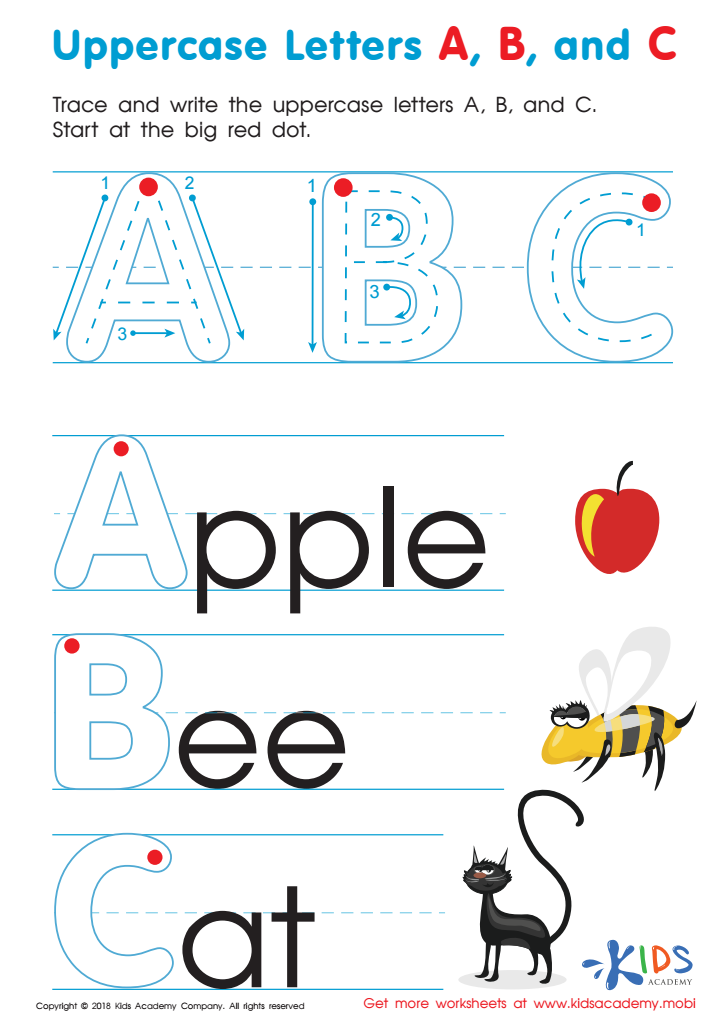

Uppercase Letters A, B, and C Worksheet
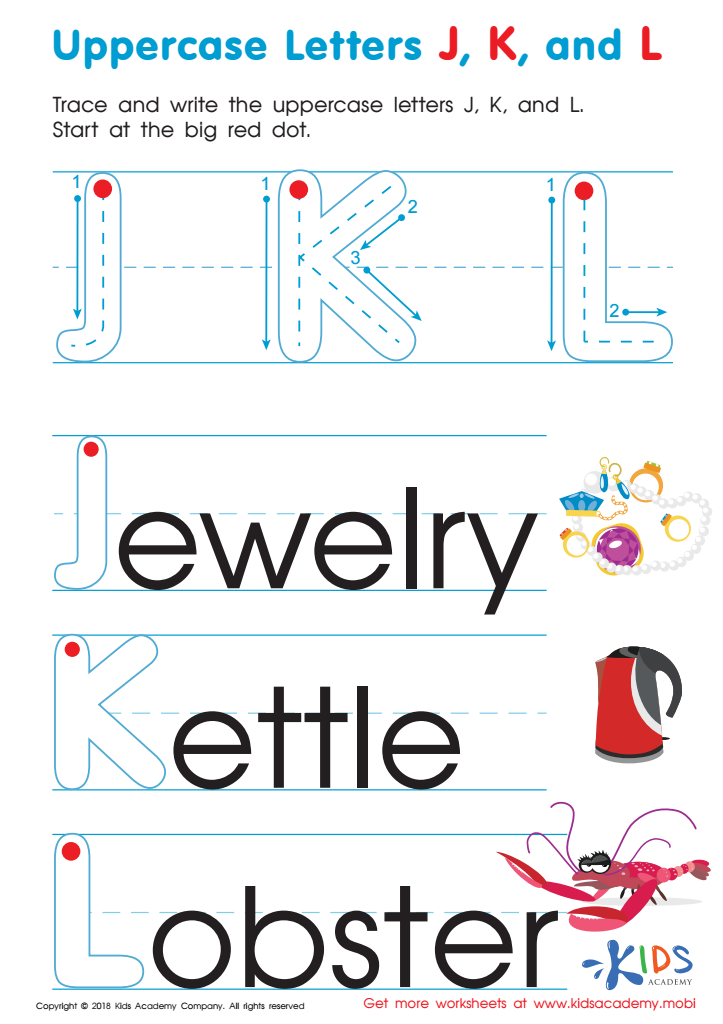

Uppercase Letters J, K, and L Worksheet
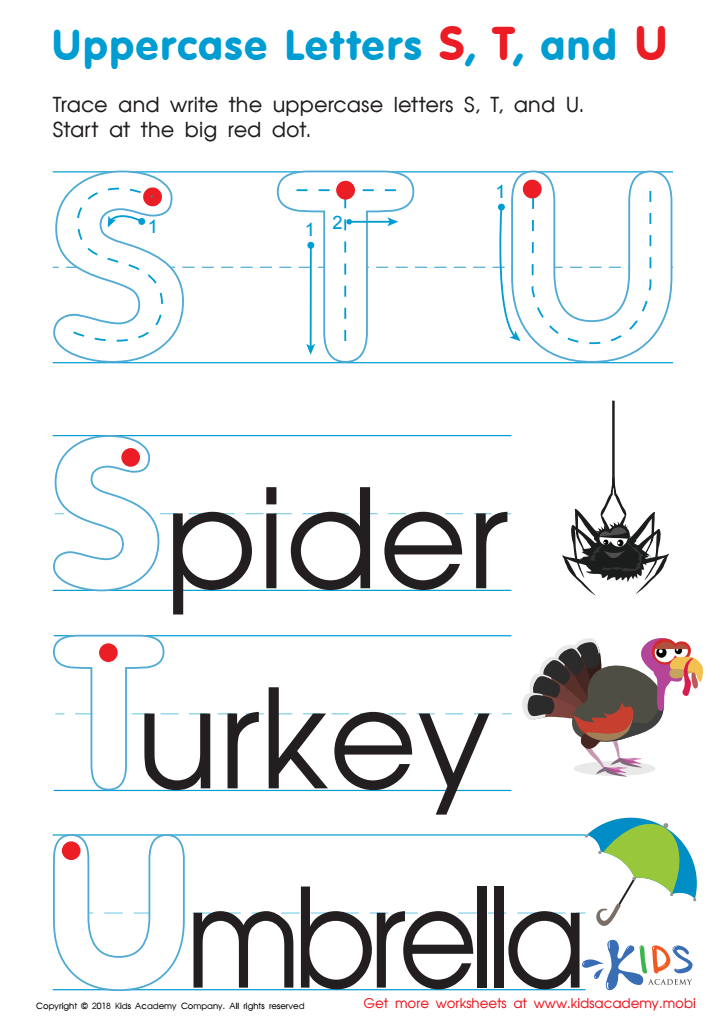

Uppercase Letters S, T, and U Worksheet
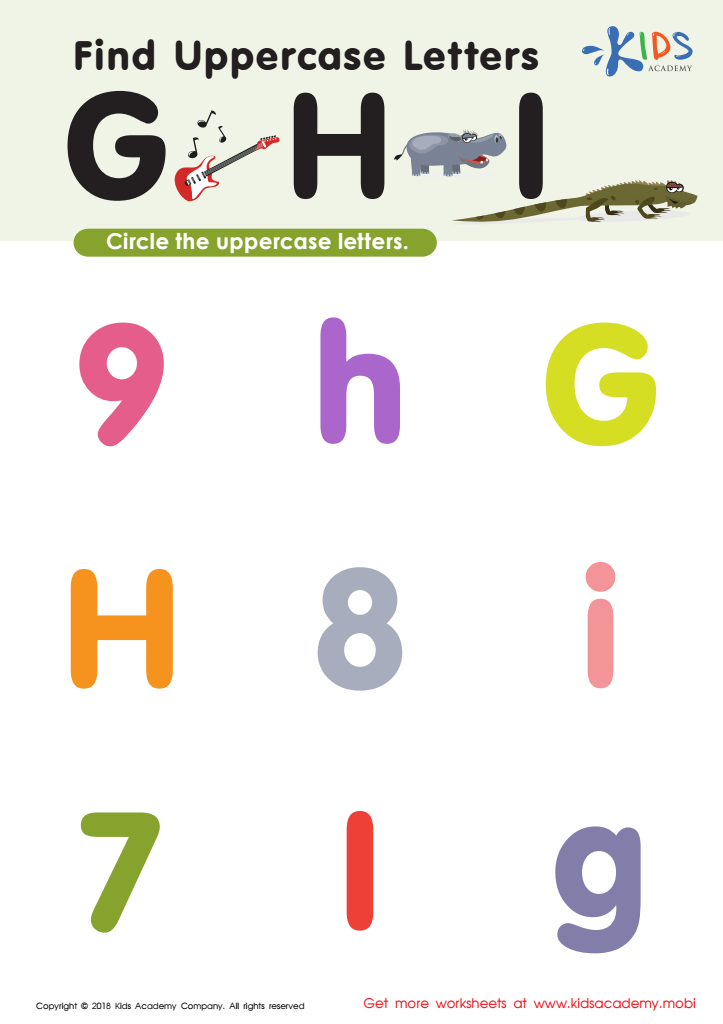

Find Uppercase Letters G, H, and I Worksheet


Uppercase Letters Maze Worksheet


Find Uppercase Letters Worksheet


Find Uppercase Letters J, K, and L Worksheet
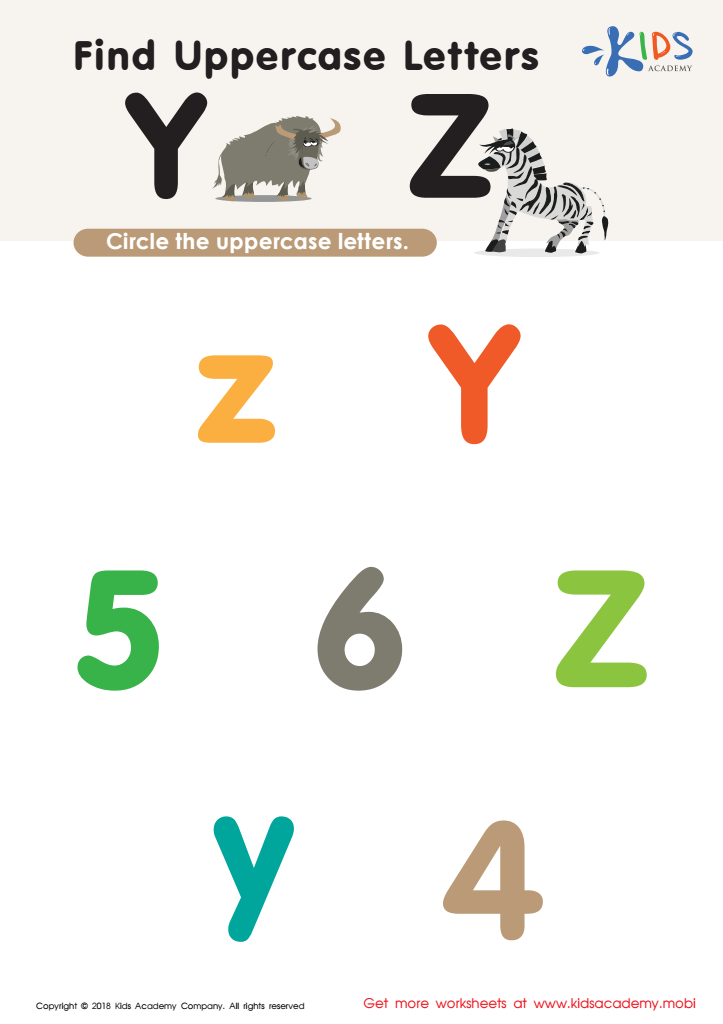

Find Uppercase Letters Y Z Worksheet
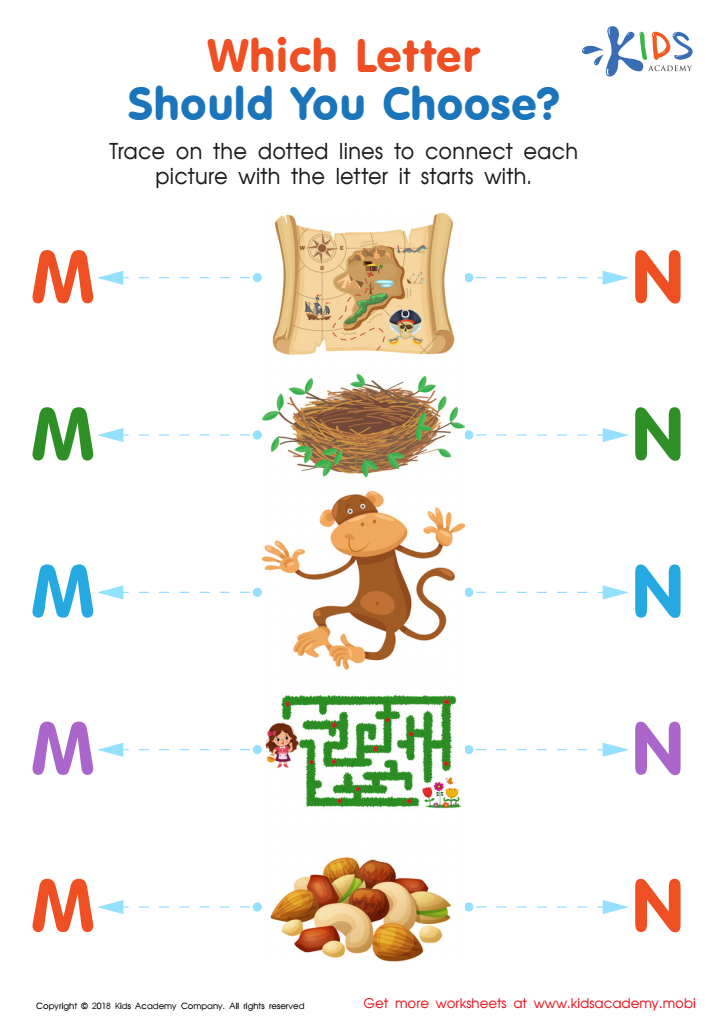

Which Letter Should you Choose? Worksheet
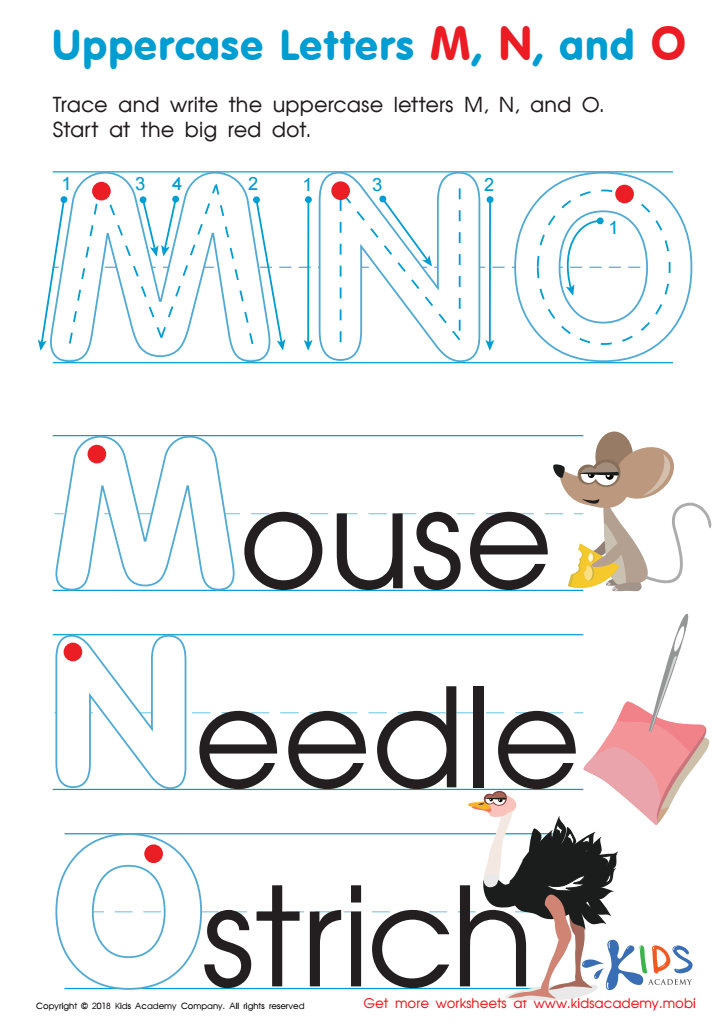

Uppercase Letters M, N, and O Worksheet
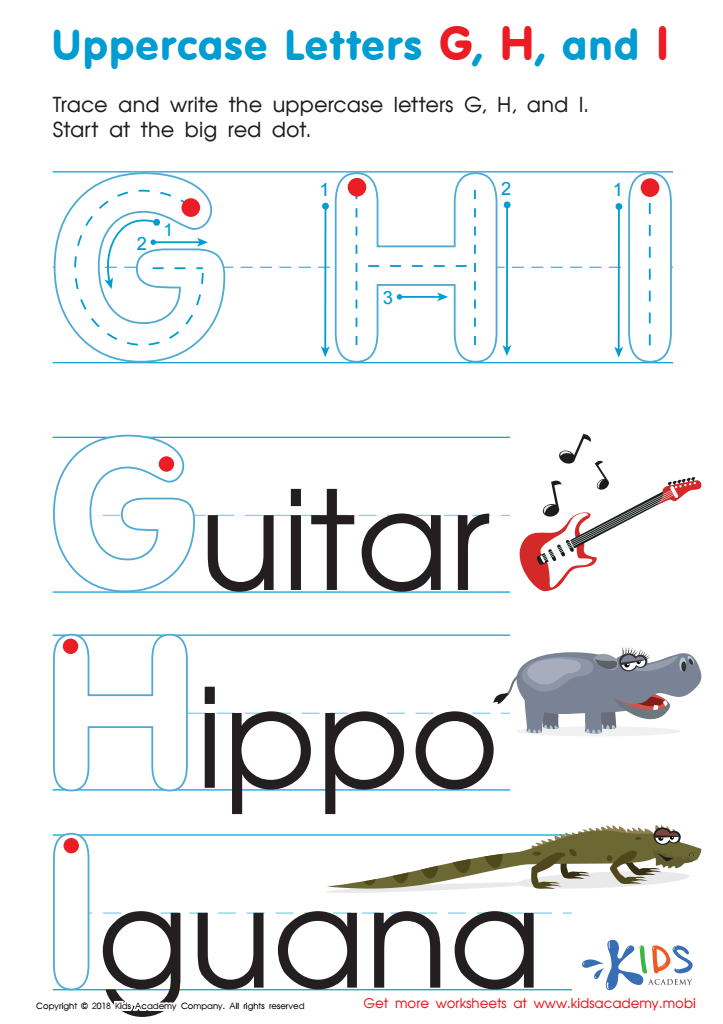

Uppercase Letters G, H, and I Worksheet
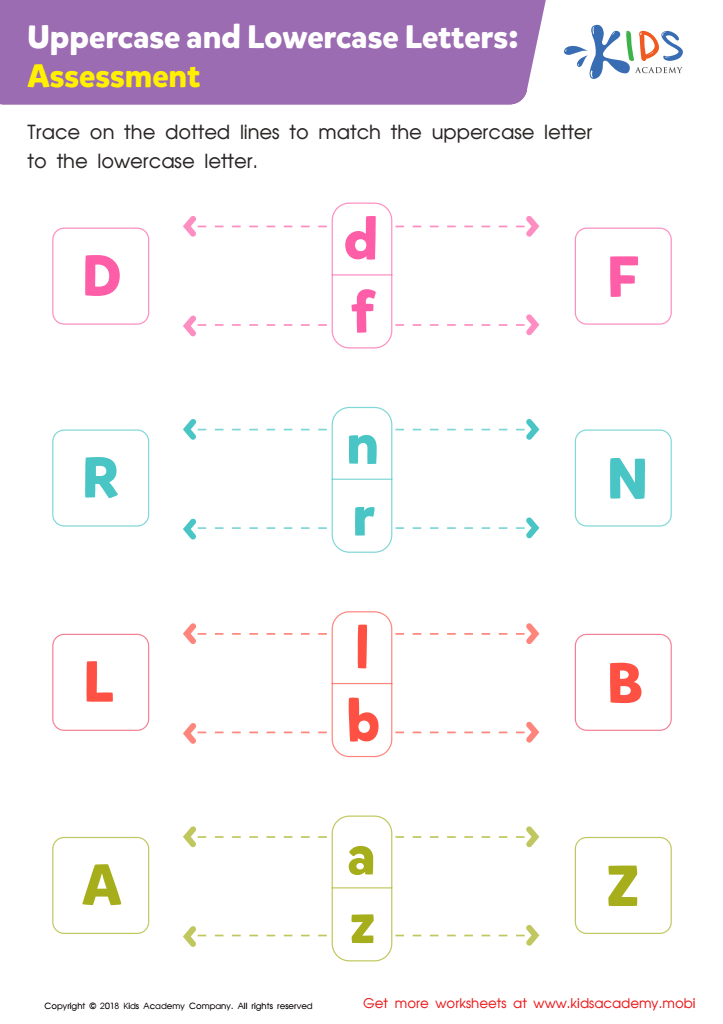

Uppercase and Lowercase Letters: Assessment Worksheet


Find Uppercase Letters P, Q, and R Worksheet


Find Uppercase Letters A, B, and C Worksheet


Find Uppercase Letters V, W, X Worksheet


Uppercase Letters P, Q, and R Worksheet
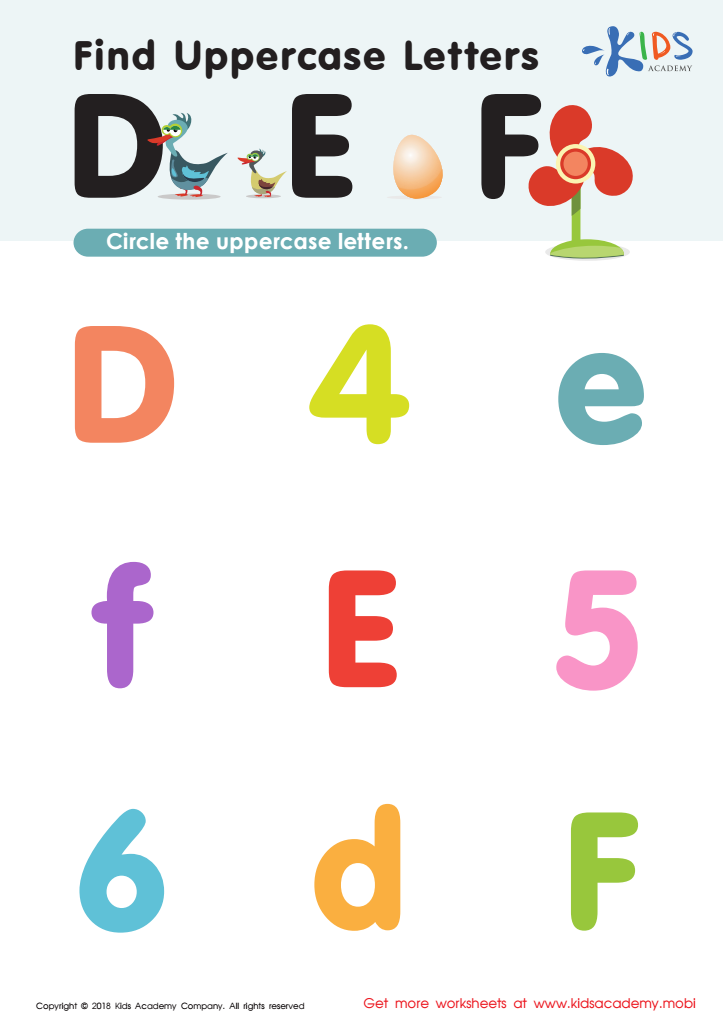

Find Uppercase Letters D, E, and F Worksheet
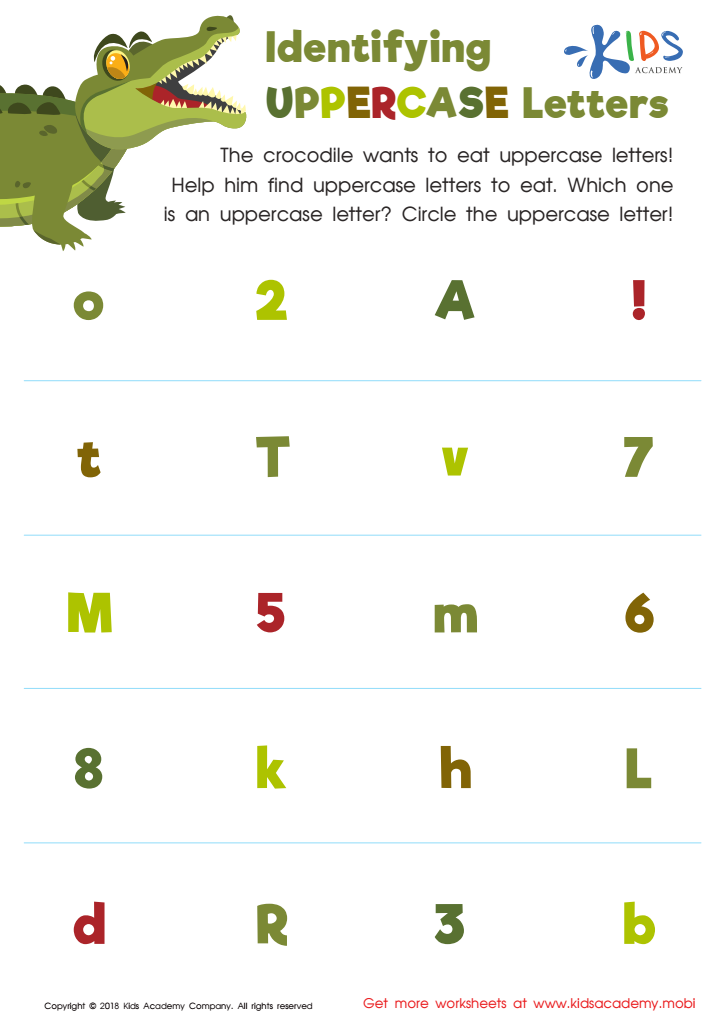

Identifying Uppercase Letters Worksheet
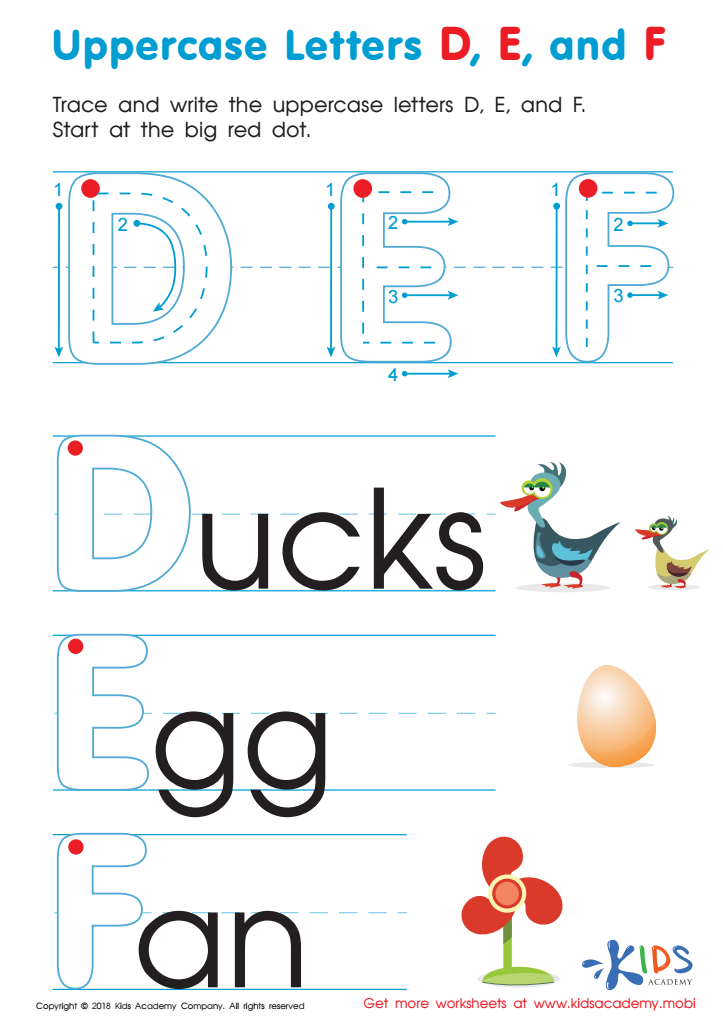

Uppercase Letters D, E, and F Worksheet
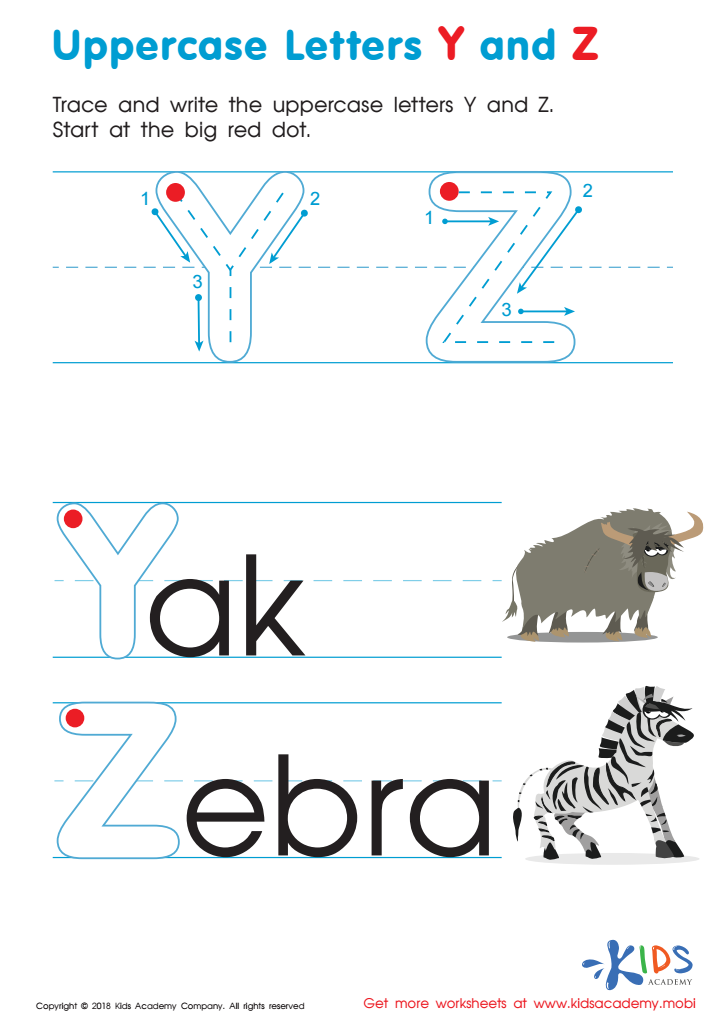

Uppercase Letters Y Z Worksheet
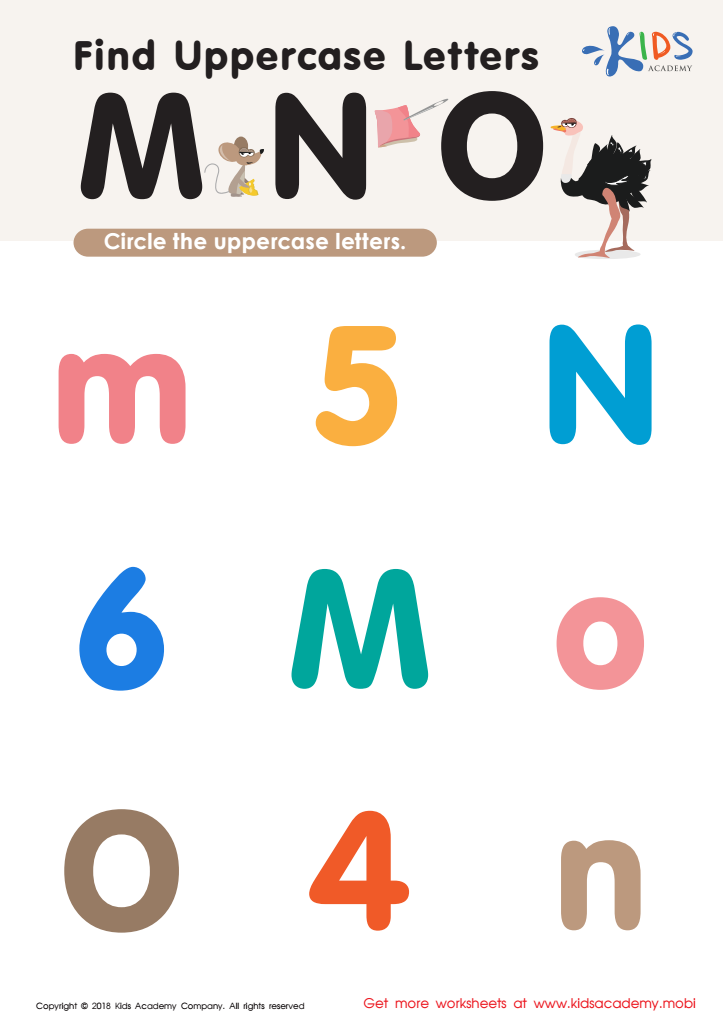

Find Uppercase Letters M, N, and O Worksheet
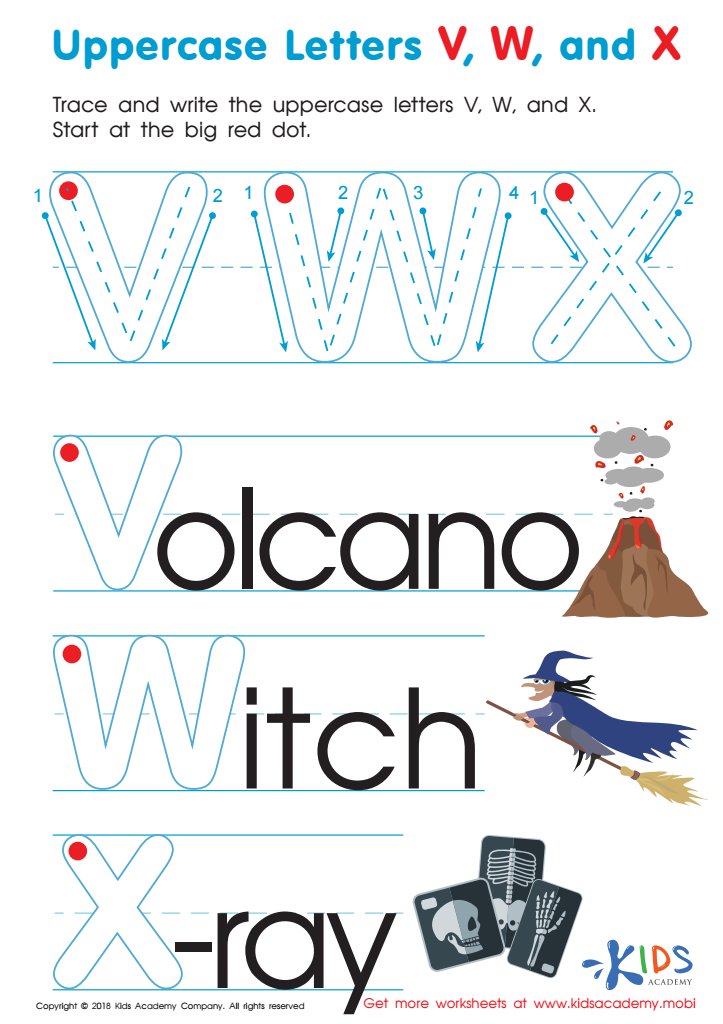

Uppercase Letters V, W, and X Worksheet
Uppercase letters play a crucial role in the literacy development of children aged 4-8, making it essential for parents and teachers to prioritize their understanding. At this stage, children are beginning to grasp the foundational elements of language, and recognizing uppercase letters helps them differentiate between sentence beginnings, proper nouns, and titles, enhancing their reading comprehension skills.
The ability to identify and use uppercase letters correctly builds confidence in writing, empowering children to express themselves clearly. This skill reinforces spelling and grammar rules, fostering a strong foundation for effective communication. Furthermore, engaging with uppercase letters can be fun and interactive, involving games and creative activities that capture children’s interest, making learning enjoyable.
In addition, emphasizing uppercase letters lays the groundwork for more advanced literacy skills. When children are adept at recognizing and using these letters, they become more fluent readers and writers, paving the way for success in future academic endeavors. Encouraging practice through illustrations, storytelling, and daily interactions helps solidify their understanding. Thus, nurturing uppercase letter recognition is pivotal, as it is linked to overall language development, reading enjoyment, and academic achievement. For these reasons, parents and teachers should prioritize this vital aspect of early learning.
 Assign to My Students
Assign to My Students













